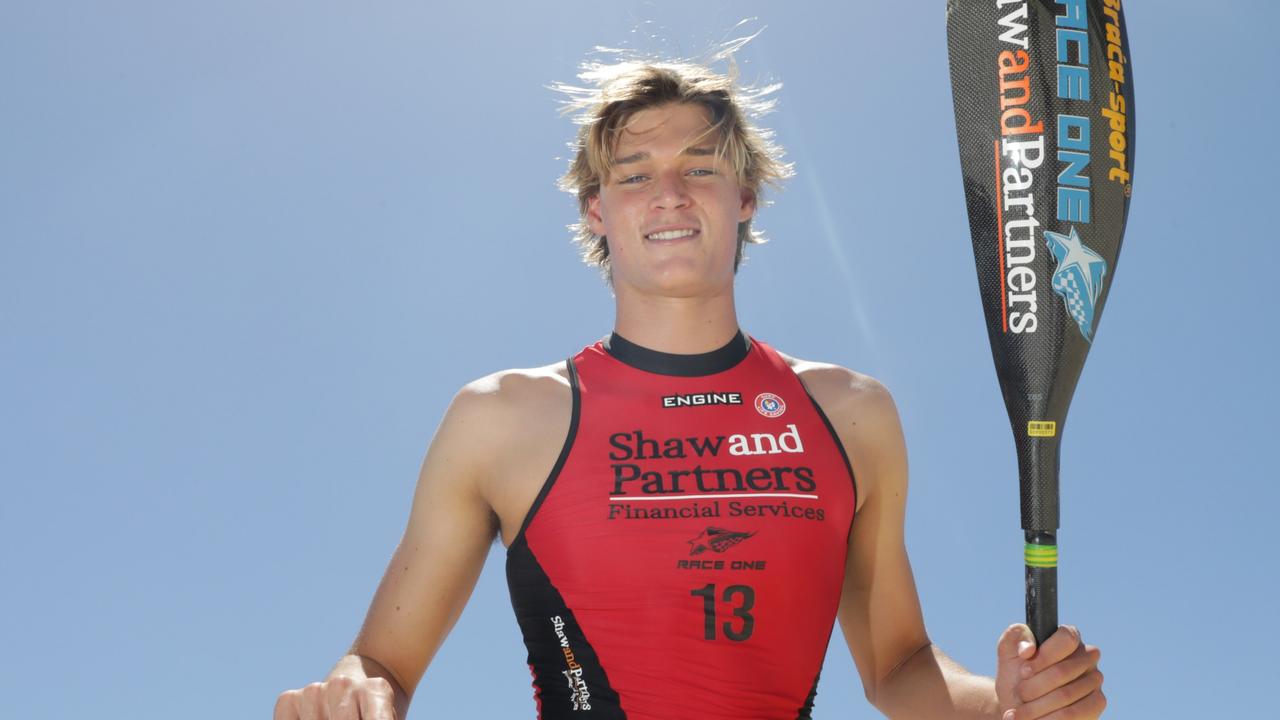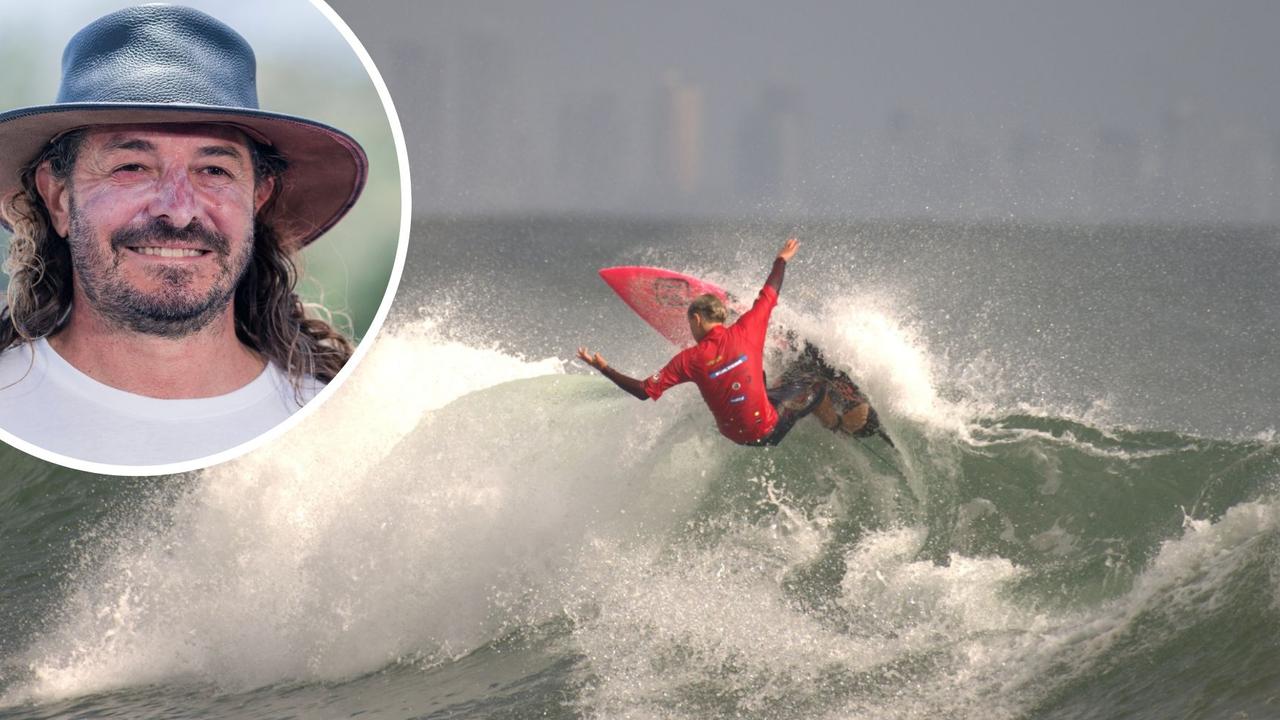Snapper on shark watch: Fanning attack sparks wave of safety measures by WSL
THE great white shark attack on Mick Fanning in South Africa last year not only scared the three-time world champion but also the sport’s governing body, the World Surfing League.
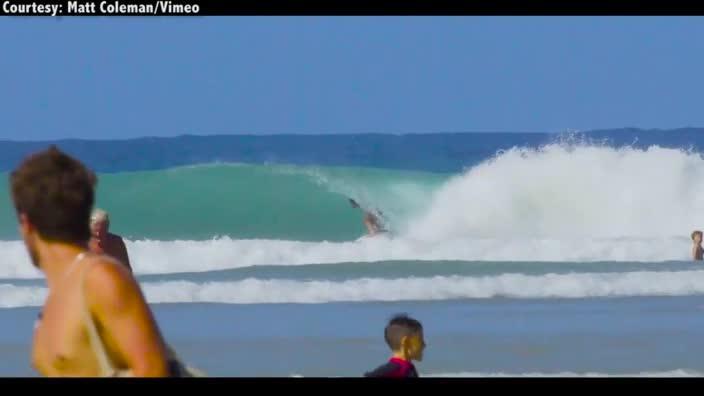
Surfing
Don't miss out on the headlines from Surfing. Followed categories will be added to My News.
THE great white shark attack on Mick Fanning in South Africa last year not only scared the three-time world champion but also the sport’s governing body, the World Surfing League.
And Gold Coast surfer Stephanie Gilmore, a six-time women’s world champion, yesterday admitted she was more scared of being attacked at shark hotspot Margaret River in Western Australia, than of being injured in the big surf.
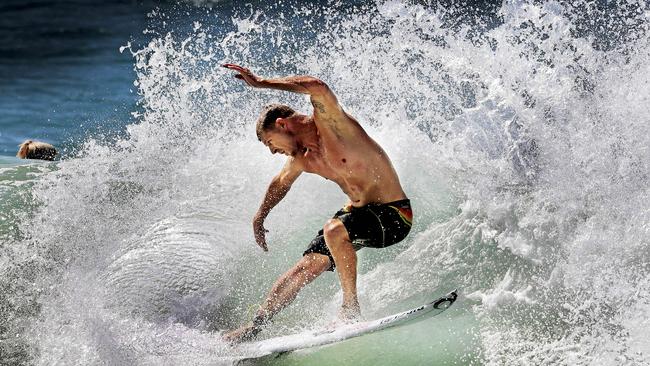
When surfers paddle out at Snapper Rocks over the next two weeks while competing in the Quiksilver Pro and Roxy Pro, each will have a jet ski riding shotgun for protection.
WSL spokesman Dave Prodan said the near-mauling of Fanning on live television was the catalyst for the measures.
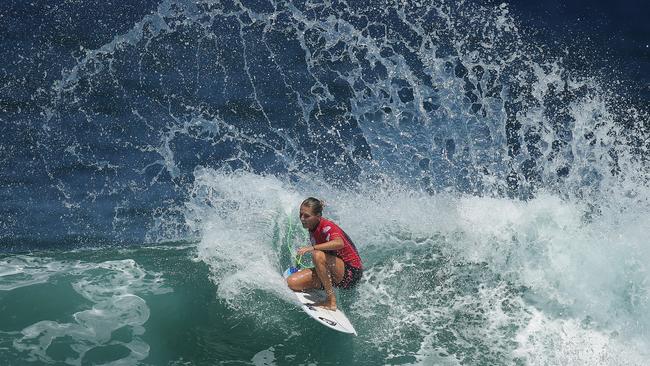
“After the situation in Jeffreys Bay last year, the WSL has increased their focus in this area and measures have been instituted in select spots this season,” Mr Prodan said.
He said events at Margaret River and Jeffreys Bay where Fanning was attacked, will have an increased focus.
The WSL will focus on situational awareness, monitoring the water with sonar, and personal safety, including electromagnetic fields.
“But today there is still nothing that is comprehensive that prevents incidents,” Mr Prodan said.
“We have boats allocated to board caddies, who traditionally sit in the water, as well as increased skis, so we have one dedicated to each athlete so we can get to people as fast as possible (if an attack happens).
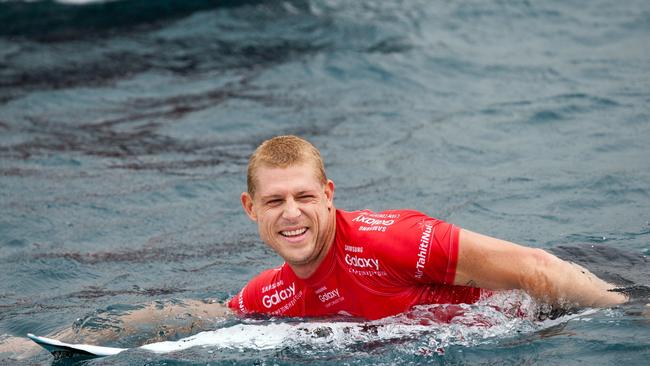
“The athletes were all briefed on this in the lead-up to the season and they seem very appreciative of all the measures that we have in place.”
“Queen of Snapper” Gilmore said she was not concerned about another season-ending knee injury when she returns to Margaret River but would be focused on the area’s reputation for killer sharks.
“The WSL have gone well out of their way to make sure the surfers feel safe and confident and keep that out of their minds,” the 28-year-old said.
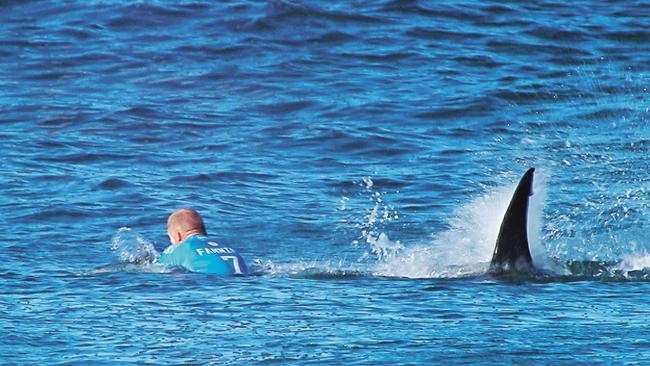
“There’s some pretty cool technology coming out that they’re looking to avoid attacks and not hurt the sharks, to just create a barrier.”
Tour commissioner and former pro Kieren Perrow told the Gold Coast Bulletin surfing was one of the few sports where athletes could come into contact with wild animals.
“They don’t run the 100m sprint or the marathon through Kruger National Park,” Mr Perrow said.
“There would be ratings for that kind of entertainment but we have to consider that we’re in their environment and we have to keep the athletes safe,
“We had been talking about it (protection measures) and looking into research a couple of years before that happened.”
Mick sorry for dropping in
MICK Fanning has apologised to any surfers he might have dropped in on during an epic two weeks of swells produced by ex-Tropical Cyclone Winston last month.
He said in a clip partially shot and edited by Gold Coaster Lachlan Mckinnon for website mySURF.tv that when the surf was pumping, he could turn into a “shark”.
“Obviously the crowds can be crazy — I apologise to anyone we burned,” said the 34-year-old. “But, um, when the waves are that good, I turn into a shark, so sorry about that.”
In the clip he is seen surfing through endless barrels along the Superbank in Coolangatta.
“It is always great being home with everyone being barrelled,” he said.
“Having two weeks of non-stop waves was incredible — the conditions were amazing.”
Coast swell for champs
THE world’s best surfers say they feel right at home on the Gold Coast ahead of their battle for the Quiksilver Pro title but the city’s highest profile surfer has his eyes on a holiday.
At a launch previewing the first World Surfing League event of the year yesterday, last year’s champions said they were relaxed and ready.
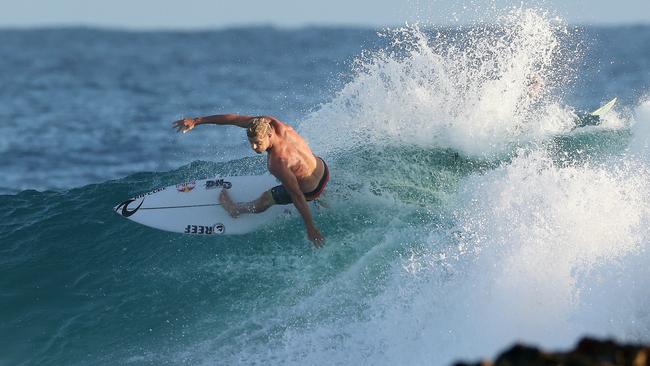
Local legend Mick Fanning said he was more than ready to check out after the opening two events this year, to decompress after a horror 2015.
“The stress isn’t there — even though we might start tomorrow, I am still cruising,” Fanning said.
Things couldn’t be more different for reigning world champion, Adriano De Souza.
He said he had struggled to handle a dream run of winning the world championship in 2015 and getting married to model Patricia Eicke.
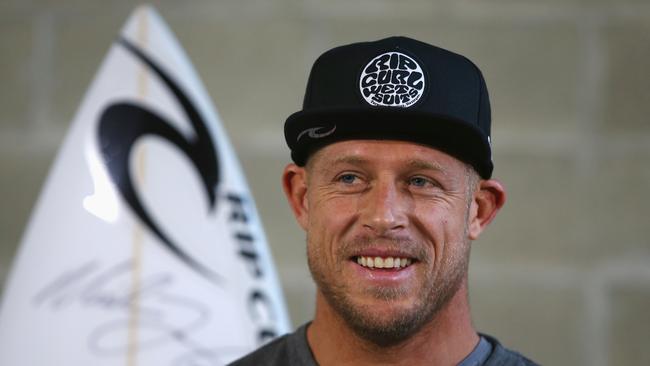
“It was pretty big,” he said. “I tried hard to handle all that perfection — a world title has always been my dream — and I got my dream girl.”
Last year’s women’s runner-up Courtney Conlogue, who is coached by Gold Coaster Mark Richardson, said she was right at home surfing ex-tropical Cylone Winston swells.
“I was here through the cyclone swell,” the Californian said.
“Oh, my gosh, it was amazing. There was probably 600 people out but it was definitely incredible.
“The crowd here is so welcoming to us Californians and there’s usually a massive cheer from people.”
Beginners guide to Quiksilver Pro
WHERE: Snapper Rocks on the north side of Point Danger, Coolangatta. Look for the temporary mega structure on the beach.
WHEN: Today to March 21.
WHO: The top 37 male and 17 female surfers in the world, plus wildcards. Eight rounds will determine a winner for the men and seven for the women.
WHAT IS THE WORLD SURF LEAGUE: The organiser and broadcaster of surfing’s top echelon. The original governing body of pro surfing, the International Professional Surfers (IPS), was founded in 1976. The next evolution was the Association of Surfing Professionals (ASP), founded in 1983. The ASP become the World Surf League last year.
TICKETS: Admission is free.
TRANSPORT: Parking is limited near the site at Coolangatta. Best to park at or catch a bus to Twin Towns, Wharf St, Tweed Heads, about 500m from competition area.
EAT: Rainbow Bay Surf Life Saving Club. Coffee and takeaway food also available.
BRING: Beach gear, a hat, water and sunscreen.
SCORING: Five judges score each surfer’s wave on a scale of one to 10. The highest and lowest scores are discounted and the surfer receives the average of the remaining three. The two best scoring waves are added together to become a surfer’s heat total.
JUDGING CRITERIA: Judges assess each wave on commitment and degree of difficulty; innovative and progressive manoeuvres; combination of major manoeuvres; variety of manoeuvres; speed, power and flow.

